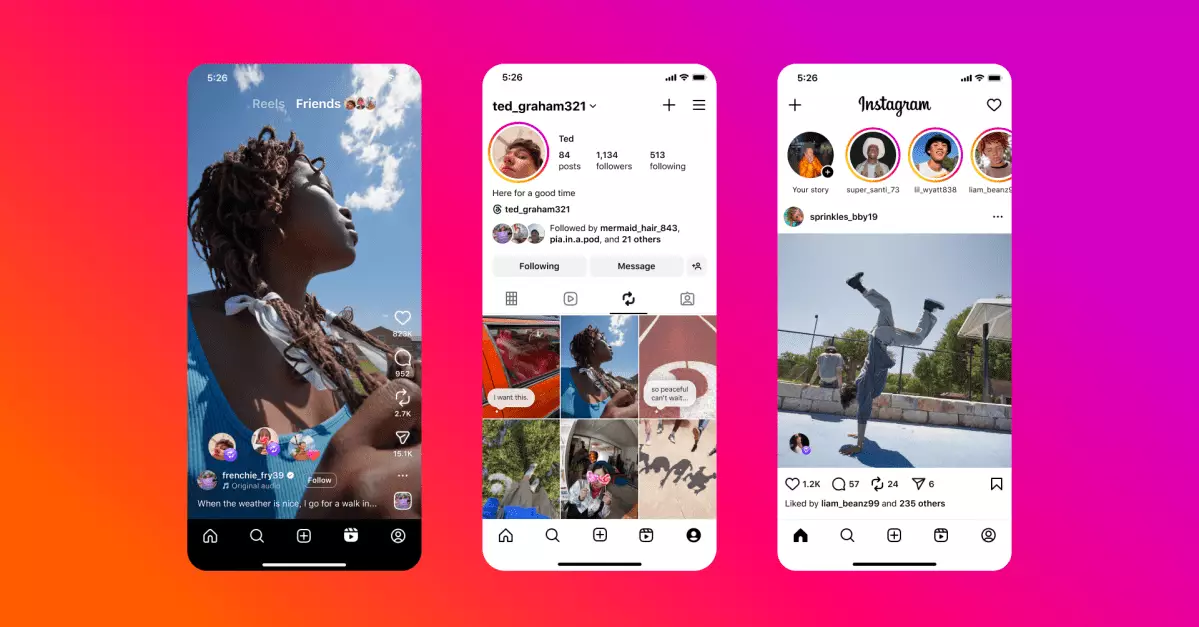Instagram has historically been a platform rooted in visual storytelling—sharing carefully curated photographs with a close-knit circle or the wider public. However, in recent years, its focus has shifted dramatically towards short-form video, echoing TikTok’s explosive popularity. The latest updates suggest Instagram is doubling down on this trend, introducing a TikTok-inspired reposting feature. This change is not just a superficial tweak but a strategic pivot aimed at reinvigorating user engagement and competitive positioning.
Unlike the previous workaround where users would share posts via stories—an often cluttered and less permanent approach—the new reposting functionality streamlines the process, allowing users to directly reshare Reels and visible grid posts to their profiles. This feature signifies a recognition that content virality and sharing are central to social media engagement today. It emphasizes a belief that users want more immediate ways to showcase content they find interesting, without the constraints of temporary stories. By creating a dedicated tab for reposts, Instagram signals a desire to organize and normalize content redistribution, making it easier for users to discover and share passions or trending moments.
This move underscores a critical realization: engagement metrics driven by sharing are essential for maintaining relevance in a crowded digital landscape. However, it raises questions about the platform’s original identity as a photo-centric network and whether this shift diminishes the nostalgic, personal aspect that once made Instagram unique.
Incorporating Elements of Competitors: From Snapchat to TikTok
Beyond reposting, Instagram is borrowing heavily from other successful platforms. The addition of a location map within private messages is reminiscent of Snapchat’s Snap Map, offering users a glimpse into their friends’ whereabouts and moments across real-world locations. This feature caters to the growing desire for authentic, location-based content, especially in an era where virtual and physical experiences are increasingly intertwined. By including data from places like music festivals or popular venues, Instagram taps into the collective desire to share real-time experiences, fostering a sense of community even if virtually.
It’s evident that Instagram is navigating an intricate balancing act—trying to incorporate features that boost engagement without overwhelming users. The intention seems to be to create a more interconnected, dynamic environment that spans both content discovery and private sharing. Yet, this strategy also risks alienating users who prefer the simplicity of traditional photo sharing, or those disillusioned with the platform’s increasingly algorithm-driven content overload.
Reclaiming Privacy and Control: A Response to User Backlash
One of the most significant aspects of these updates is the nuanced approach to privacy controls—particularly around the activity tab that displays friends’ interactions. When originally introduced, many users viewed the feature as invasive, fearing it would turn followers into spectators scrutinizing every interaction. Recognizing this, Instagram is now offering increased options to conceal likes, reposts, and interactions or mute specific users’ activity feeds. This demonstrates an understanding of the persistent tension between social transparency and privacy.
This move also aligns with broader societal conversations around digital boundaries and consent. Users, especially younger demographics, increasingly demand autonomy over what they share and see. Instagram’s effort to provide granular control reflects an acknowledgment that visibility should be optional and customizable. It’s a strategic step to prevent alienation—aiming to keep its community engaged rather than driven away by intrusive features.
The Core Dilemma: Can Reposting and Privacy Enhancements Save Instagram’s Identity?
While these updates indicate Instagram’s adaptability, they also highlight a deeper issue: the erosion of the platform’s original appeal. As the focus shifts to Reels, shares, and location-based interactions, the personal touch of connecting with friends through simple, original photos feels increasingly sidelined. For content creators who built their following on authentic snapshots and genuine engagement, these incremental changes may feel like bandaids on a wound.
The challenge lies in balancing innovation with authenticity. Reposting can foster community and increase content circulation, but without clear boundaries and meaningful engagement, it risks turning users into passive consumers rather than active participants. Similarly, privacy controls are necessary but may not fully assuage fears about oversharing or constant surveillance.
Instagram’s recent updates signal a platform eager to reinvent itself—embracing features that amplify connectivity, competitiveness, and user autonomy. Whether these changes will be enough to arrest its decline or merely add complexity to an already crowded space remains an open question. What’s clear is that Instagram must redefine its core purpose in a way that aligns with user expectations for meaningful, personalized interactions—something that no amount of reposts or location maps can fully achieve without genuine community and trust.

